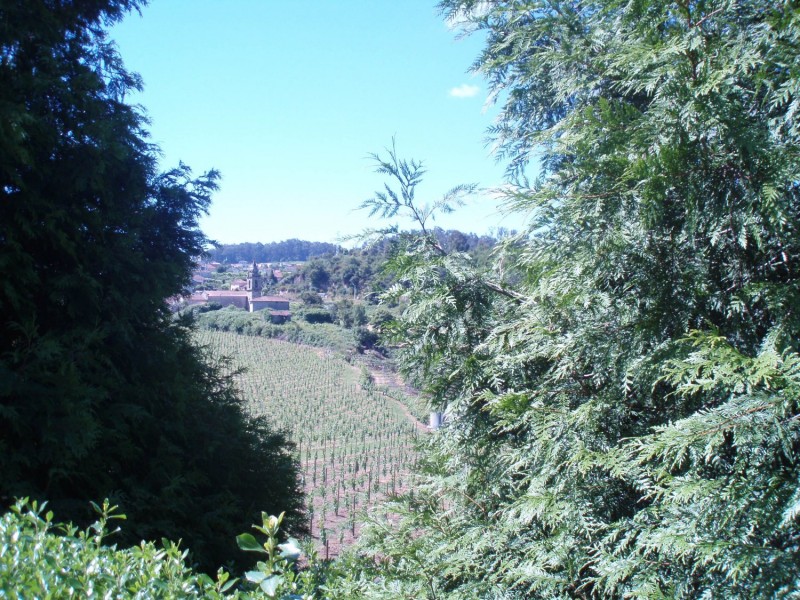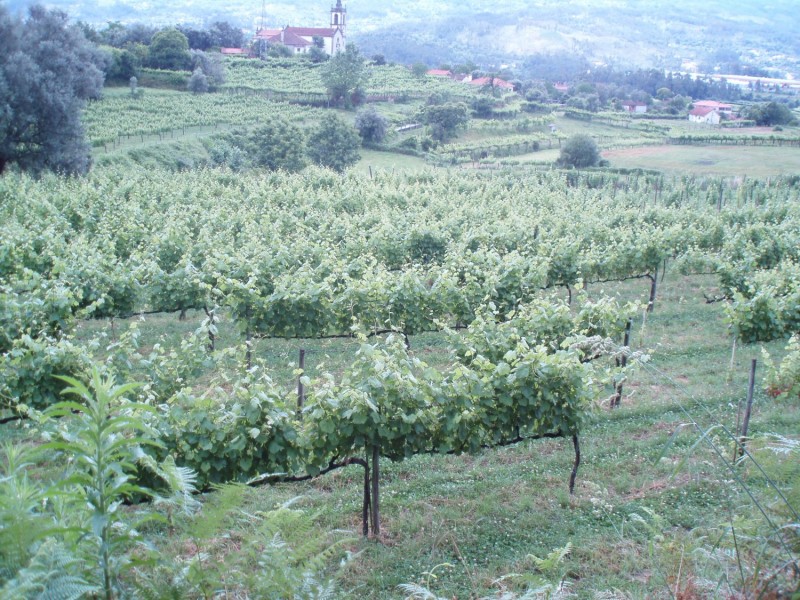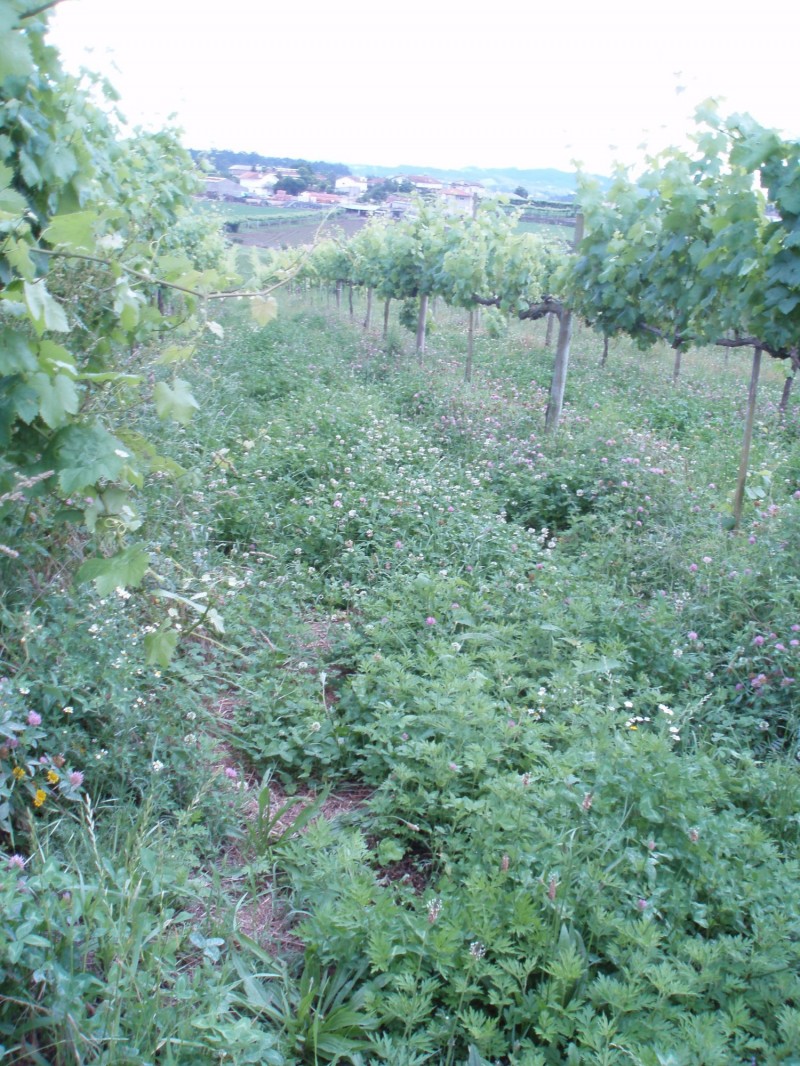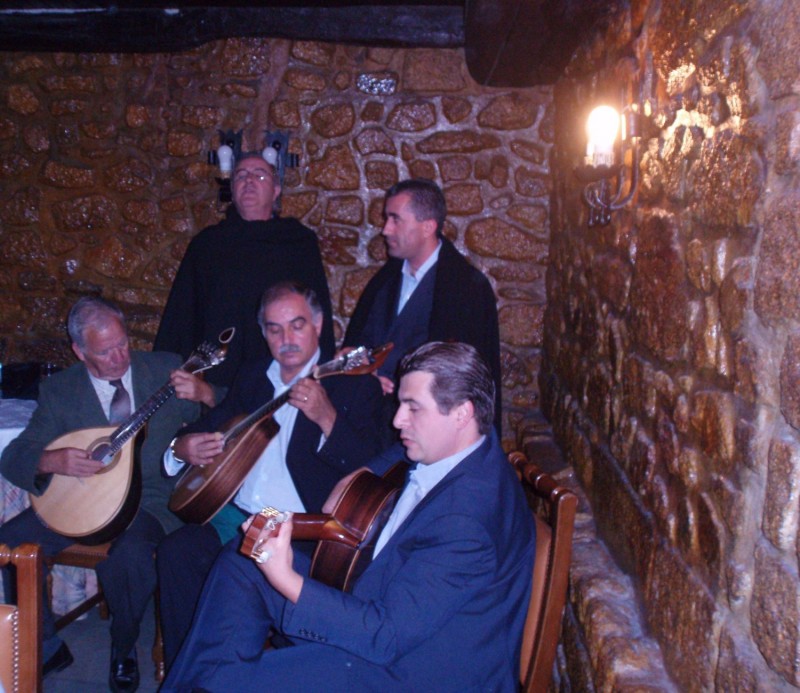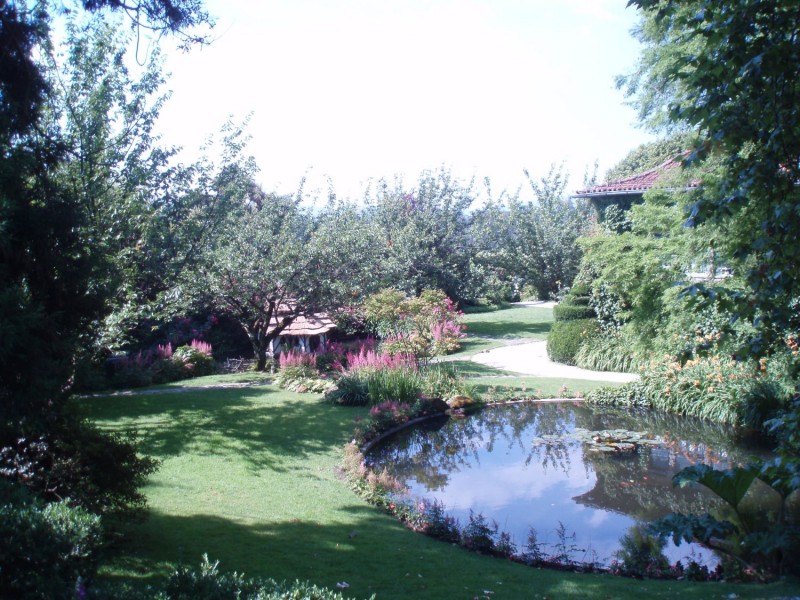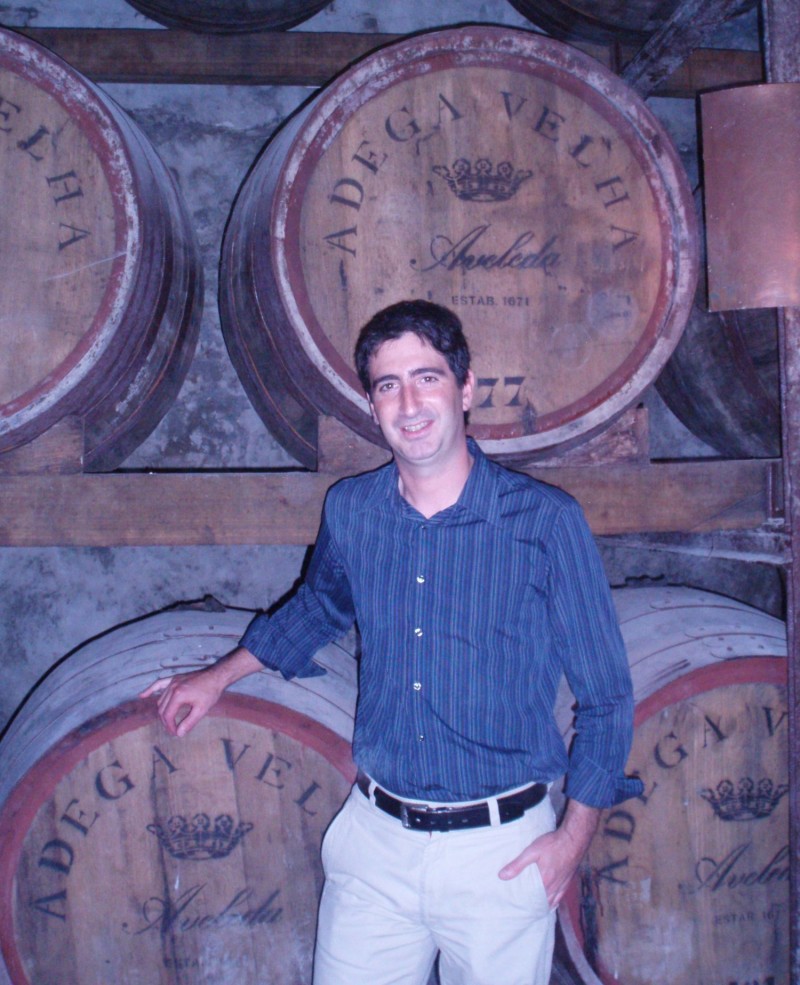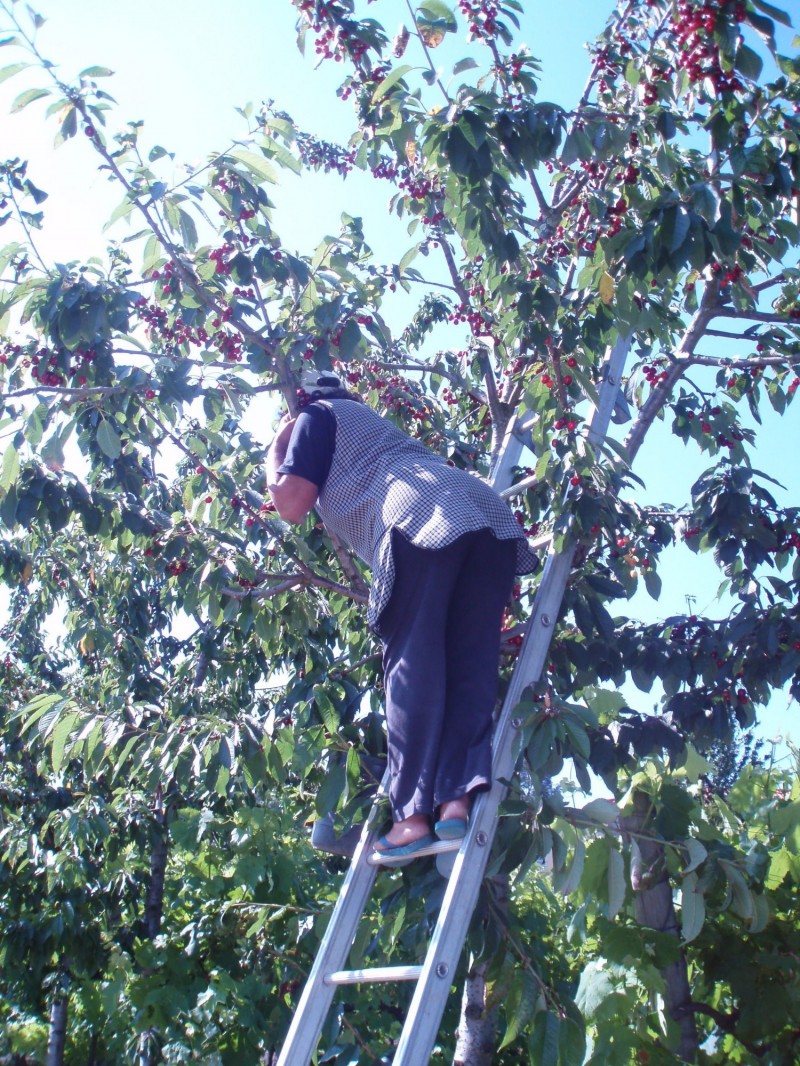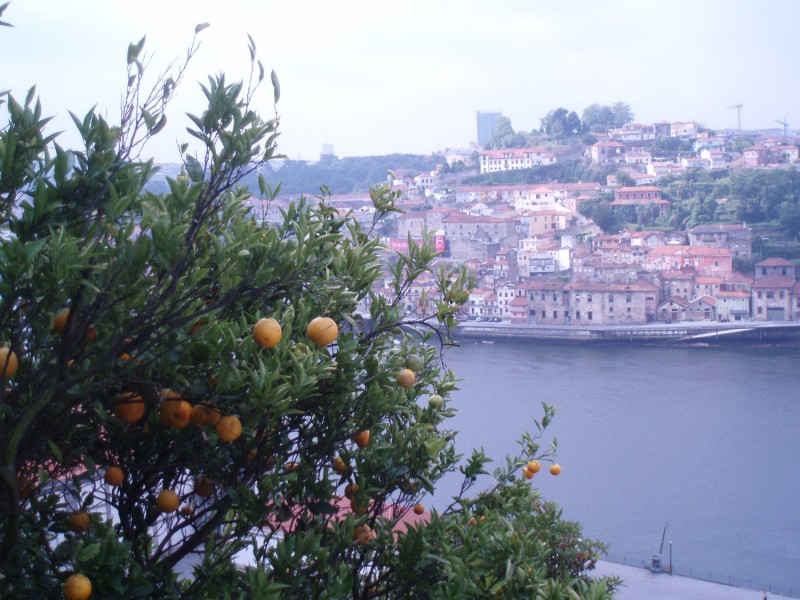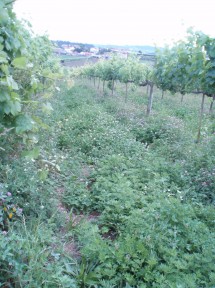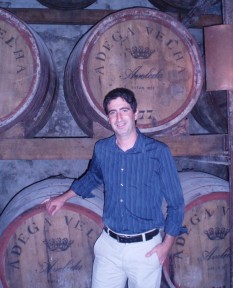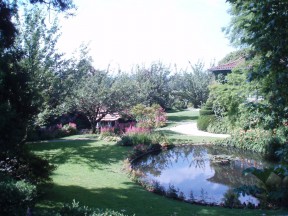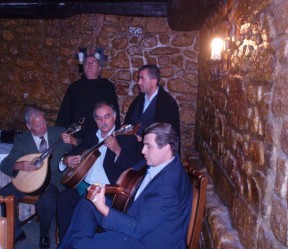It had been more than 10 years since I last visited Vinho Verde and I was keen to see all the changes that had taken place. Lying north of Oporto, it has a lush green hilly landscape, and is dissected by fast flowing rivers – more dramatic in scenery the further north you go towards the Spanish border.
One of the fascinating things about this trip for me was the opportunity to get to grips with some of the Vinho Verde grape varieties and get a better understanding of their characteristics. In the past most Vinho Verdes I had tasted were blends of these traditional varieties but on this visit there was much more of a trend towards varietally-labelled wines which made for some interesting comparisons as there were big differences between them. Many of the visits stood out for one of these intriguing native grape varieties more than another so I have highlighted the variety where possible.
Afros & the taming of Vinhão
The highlight of the whole trip for me was our visit to Afros (www.afros-wine.com), also known as Casal do Paço, where we met owner Vasco Croft. In producer terms, this is a small-scale, handcrafted operation. Vasco has a 20ha farm and only 7ha under vine, cultivated biodynamically and producing 20,000 bottles a year (5,000 litres), although he aims to increase this to 100,000 bottles eventually. Although the family have owned this property since the 17th century they are new to wine production and this is only their 4th vintage.
Perhaps it was the pervading sense of calm and peacefulness that made this visit so attractive, together with the warmth, hospitality and slightly spiritual air of our host who had more than a passing resemblance to Richard Gere.
Or perhaps it was the beautifully rustic surroundings of the family dinning room accompanied by Vasco’s family (bother, sister in law and young daughter) and the delightful lunch which started with a very fresh and fragrant sparkling wine aperitive and a colourful salad of wild flowers, goats cheese and figs, followed by delicately flavoured black pasta with cream and ham.
What stood out as well of course was the obvious high quality of the wines; it all made for a special occasion. The white wines had a lovely purity and delicacy and the reds were a revelation.
Vasco also made a very useful broad comment on Portugal – “The north is cool and, the colours are all green and blue, the soils are granite and the people are traditionally more right-wing; the south is hot and the colours are red and yellow with limestone soils and it is politically left-wing.”
Vinhão
According to Vasco, Vinhão (the deeply-coloured red variety widely used in Vinho Verde) “is like a wild flower of the forest. You need to give some finesse to its wildness. It is a challenge to work with and to drink”.
For me, the red Vinho Verde 2005 here made from Vinhão was the best red wine we tasted on the whole trip. It won a silver medal at the Decanter Wine Awards – a surprise for everyone involved as Vinho Verde reds are not supposed to be suited to the British palate.
Afros Vinhão 2005 – Still very youthful opaque purple core and narrow rim – smoky, leathery notes on the nose are followed by spice and dried rose petals and perfume notes. Very smooth initial attack on the palate with a good weight of creamy, dark berry fruit and dried roses and floral notes – smooth, powerful and long. Vasco certainly tamed Vinhão’s wildness in this one.
We also tried the 2007 Afros Vinhão which was a bit impenetrable and very young but also smooth and densely flavoured. There was also a sparkling red Vinhão which was a big success with many of our group. Bright purple in colour, with rubber and mint notes and lively raspberry and blackberry fruit. Unusual but very enjoyable.
* * * * * * * * * * * * * * *
Quinta de Santa Maria
The estate is run by Antonio Vinagre, whose family have been here since 1926. His father and grandfather worked in banks in Oporto and came here at weekends. Their 70 ha vineyard took four generations to consolidate into one area.
Their Quinta de Tamatiz is 100% Loureiro but they have also planted Alvarinho and Arinto before the law changed in 1978. They don’t use herbicides but use grassing between the rows (see right).
This visit was characterised (like so many) by the very warm hospitality of the owners. The heavy scent and striking presence of a linden tree dominated the courtyard. We stood around a barrel in the tasting room tasting the individual white Vinho Verde varieties accompanied by chunks of rustic bread and delicious local cheeses.
The tasting finished with a 20yrd old brandy, made from Vinhão and here my tasting notes become briefer: Golden amber, powerful yet smooth and spicy – Wow!
Loureiro – described by Vasco Croft as ‘not yet discovered and like a nymph’.
Quinta do Tamariz 2006 (Quinta de Santa Maria) – Silver-hued, aromatic honey, roses and lime blossom fragrance, juicy/lively acidity with pink grapefruit and pithy flavours.
I also liked the purity of the Afros Loureiro 2007 at our previous visit which had a grapefruity freshness without being bitter and a rose-petal character on the nose.
Arinto
Citrine to straw coloured, citrus and apple notes with a savoury, salty tang. Full bodied and quite structured with powerful acidity and good length. On one of my first trips to Portugal I was fortunate enough to be given a bottle of a 1956 Bucelas By Señor Santos, the highly respected and distinguished winemaker and cellar master at Hotel Bussaco; it was pure Arinto. This was in honour of my friend’s birth year and when we got back to England and tasted the wine it was a revelation: rich, oily, unctuous, deep gold but with a core of lively acidity, steeliness and power to the end.
2007 Arinto Vinho Verde (Quinta de Santa Maria) – Very pale almost waterwhite, zesty lemonpeel, grapefruit and savoury leesy notes on the nose and palate. Good mouthfeel, lemon zest and leesy flavours, some length.
Blends
Quinta de Santa Maria Vinho Verde 2006 – Arinto and Loureiro 50%/50%. – lemon/gold, more citrus zest on the nose. Richer, fuller texture and long acidity.
Quinta de Santa Maria – 11.5%/vol Alvarinho, 78% , Loureiro 28%, Vinho Regional Minho (sub-region Cávado). Not allowed to be Vinho Verde and have Alvarinho on the label unless declassified to Vinho Regional. – pale lemon, heady peach and floral notes on the nose. Fuller, lusher texture with a softer richer initial attack. Slightlly spicy tropical fruit on the finish.
* * * * * * * * * * * * * * *
Quinta da Aveleda & a non-Vinho Verde variety
Another visit that stood out for different reasons was the visit to Quinta da Avaleda with our host was the handsome Francesco Guedes Almeida (a member of the Guedes family who own the company) and the affable Luis Silva (pictured left), the export sales manager.
World-wide brand
Aveleda are famous for a number of reasons: they are the biggest Vinho Verde producers producing a total of 14 million bottles. They produce the biggest–selling Vinho Verde in Casal Garcia (8 million bottles). Casal Garcia has been around since 1947 and is sold in over 70 different countries so it is a world-wide brand.
Quinta da Aveleda also produce wines from the Douro and Bairrada as well as Vinho Verde. They are a very old aristocratic family, having been around since 1671 and they have the most magnificent gardens and beautiful park-like setting.
The estate we visited is approx 200ha, comprising 30ha of gardens, 30ha of forest and a 150ha vineyard. They pick 95% of the harvest by machine and are one of the few who do this. This has reduced harvest time from 3½ months to 3 weeks! Varieties planted are Trajadura, Alvarinho and Arinto.
Professional
We were given the most wonderful hospitality and a very professionally organised visit. The tasting was held in a supremely professional tasting room with our own individual wash basin style spittoons. They took us through the range from Casal Garcia to the Aveleda Follies range and their wines from the Douro and Bairrada. The two wines that excited me the most here were the Aveleda DOC Bairrada 2005 Touriga Nacional (lower yields at 50 hl/ha)/ and the 2003 version of the same wine. The latter was definitely the star of the show.
Touriga Nacional
Touriga Nacional 2003 Quinta da Aveleda Follies – DOC Bairrada – inky black core, smoke, cream, liquorice and toast on the nose and palate with an intriguing beetroot, slightly earthy flavour. It was a very smooth, complex, richly textured wine with some exciting flavours beneath a suave texture.
* * * * * * * * * * * * * * *
Quinta de Lourosa – Putting a sparkle into wines
We also had an excellent visit and dinner at Quinta de Lourosa, in the sub-region of Sousa, with Joana de Castro as our host. Joana’s father Rogério was a professor of viticulture at Lisbon University and was busy doing exams at the time of our visit so could not be there. He had invented a training system called ‘Lys’ which had later become very popular in Portugal and was used in some of their 27ha vineyard. I liked very much their red (Quinta de Lourosa Vinho Regional Minho, Red Superior 2003), the sparkling white (see note below) and the sparkling red (Espumante Red) which went very well with the roast pork spare ribs we were given at dinner.
Quinta de Lourosa Vinho Verde Espumante 2005 – predominantly Arinto. Quite deep, yellow-gold, very fruity on the nose and palate. Not very leesy, more citrus and peach fruit. Creamy mousse with soft bubbles. Deliciouis as an aperitive.
* * * * * * * * * * * * * * *
Quinta de Linhares – There was a big focus on single varietals here and their single varietal wines were all exceptionally clear, fresh and well-made with great purity and focus; but when tasted by themselves I preferred the classic Vinho Verde blend although with food the Avesso really came into its own.
Azal
Quinta de Linhares Azal – acidic and dry, savoury and fresh with tangy green fruit on the palate.
Avesso
Quinta de Linhares Avesso 2008 Vinho Verde 13%/vol – more savoury salty lemon flavours and aromas – blossom and green fruit, with a savoury slightly salty finish.
Blend
Quinta de Linhares Vinho Branco 2007 – a blend of Trajadura, Loureiro, Avesso – pale silver-green, lightly rose petal, flowery nose, more Loureiro on the nose), softer floral notes on the and more weight on the palate.
* * * * * * * * * * * * * * *
Co-op Cave Monção – very competent winemaking. I liked the Muralhes de Monção 2007 but the Alvarhinos stood out for me. Their new rosé which is a blend of Vinhão and Alvarinho had a very commercially appealing style.
Alvarinho Deu La Deu 2007 – heady fragrant peach and musky notes, much richer texture, quite silky with an off-dry initial impression ending on a slight bitter almond note adding interest and length to the finish.
Alvarinho Deu La Deu Caso de Caravalho 2007 – Mid lemon yellow, much deeper than Loureiro in colour. Hints of vanilla and toast on nose and on the palate smooth, creamy notes combined with lemon sorbet. Buttery, creamy but still fresh and vibrant.
* * * * * * * * * * * * * * *
Quinta da Lixa – a very professional operation who gave us a comprehensive tasting of their range and reinforced the differences once again between the varietals. I liked the Quinta da Lixa Loureiro best.
* * * * * * * * * * * * * * *
Quinta do Toutiçal – located in a stunning setting on a tortuous bend in the river near Castelo de Paiva.This was a very professionally organised tasting but the wines here were more to local taste than most we had tried, having some astringency on the finish. The winemaker believes keenly in not de-stemming and feels this does not make for bitter wines but I beg to differ.
* * * * * * * * * * * * * * *
– a 4 year old company based in the Cávado sub-region, producing 80% whites from Loureiro, Trajadura and Arinto and 20% reds from Vinhão.
Their best wine is the Cristopa Vinho Verde.
They were extremely hospitable and not only hosted an excellent meal with their wines but had organised a group of musicians to play the particular style of Fado associated with Coimbra. It made for a memorable and quite moving end to the evening.
With grateful thanks to Nuno Silva, Comissão de Viticultura da Região dos Vinhos Verdes.
Encostas do Condado
© 2008 – 2011, Susan Hulme MW. All rights reserved.

